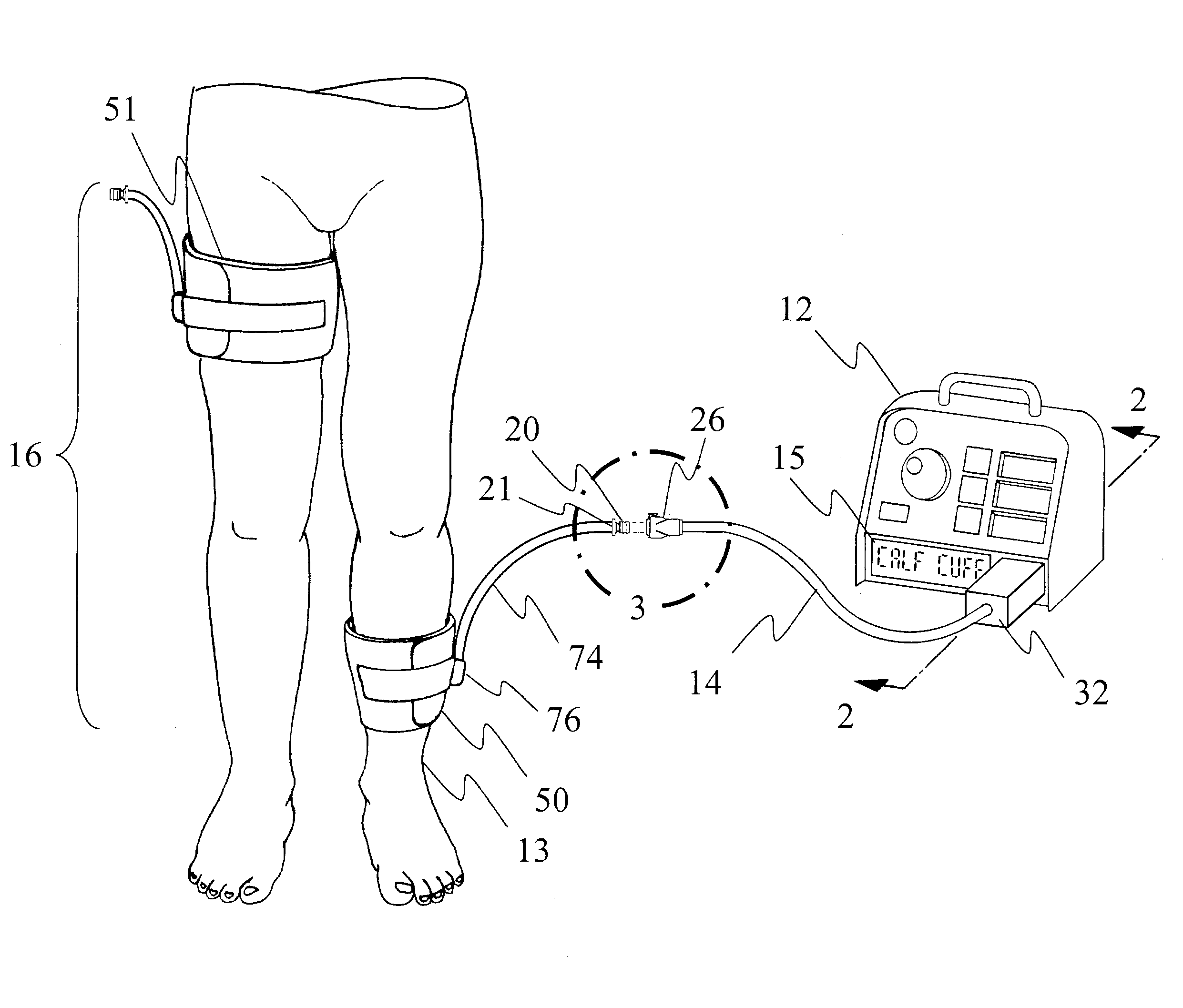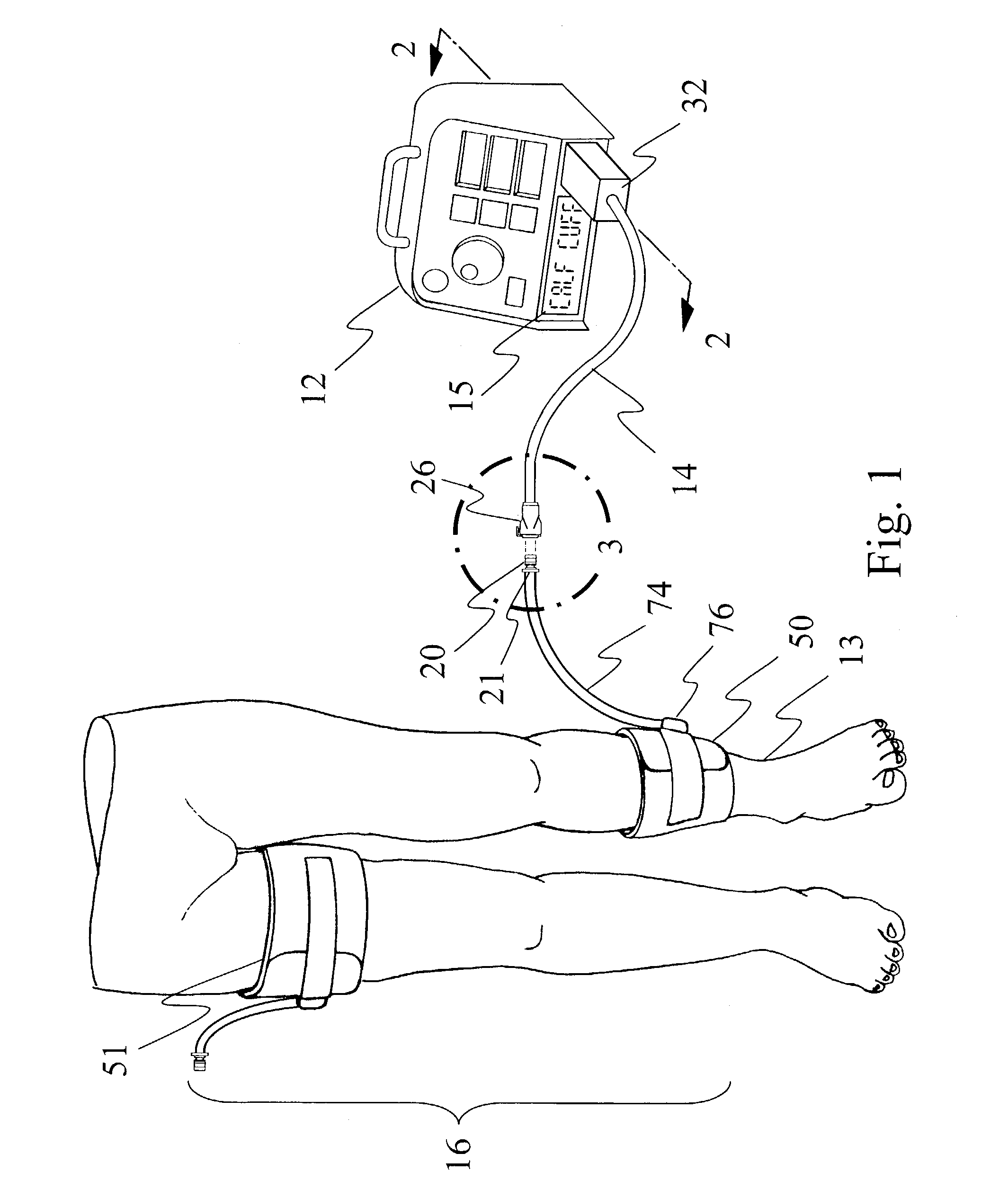Adaptive tourniquet cuff system
a tourniquet and cuff technology, applied in the field of adaptive tourniquet cuff systems, can solve the problems of compromising sterility, unsafe conditions, and inability to function predictably or properly, and achieve the effects of reducing safety and operational features, reducing safety, and reducing safety
- Summary
- Abstract
- Description
- Claims
- Application Information
AI Technical Summary
Problems solved by technology
Method used
Image
Examples
Embodiment Construction
[0022]A specific embodiment illustrated is not intended to be exhaustive or to limit the invention to the precise form disclosed. It is chosen and described in order to explain the principles of the invention and its application and practical use, and thereby enable others skilled in the art to utilize the invention.
[0023]FIG. 1 shows the preferred embodiment of the invention consisting of tourniquet instrument 12, fill line assembly 14, and cuff set 16. Fill line assembly 14 includes fill line connector 26 and cuff identification module 32. Cuff set 16 comprises contour calf cuff 50 which has physical characteristics suitable for application to a lower leg within size and shape limits and contour thigh cuff 51 which has different physical characteristics suitable for application to a thigh within different size and shape limits. For clarity, physical characteristics of cuff 50 and cuff 51 include their size, shape, materials, and stiffness. Also for clarity, a physical characterist...
PUM
 Login to View More
Login to View More Abstract
Description
Claims
Application Information
 Login to View More
Login to View More - R&D
- Intellectual Property
- Life Sciences
- Materials
- Tech Scout
- Unparalleled Data Quality
- Higher Quality Content
- 60% Fewer Hallucinations
Browse by: Latest US Patents, China's latest patents, Technical Efficacy Thesaurus, Application Domain, Technology Topic, Popular Technical Reports.
© 2025 PatSnap. All rights reserved.Legal|Privacy policy|Modern Slavery Act Transparency Statement|Sitemap|About US| Contact US: help@patsnap.com



